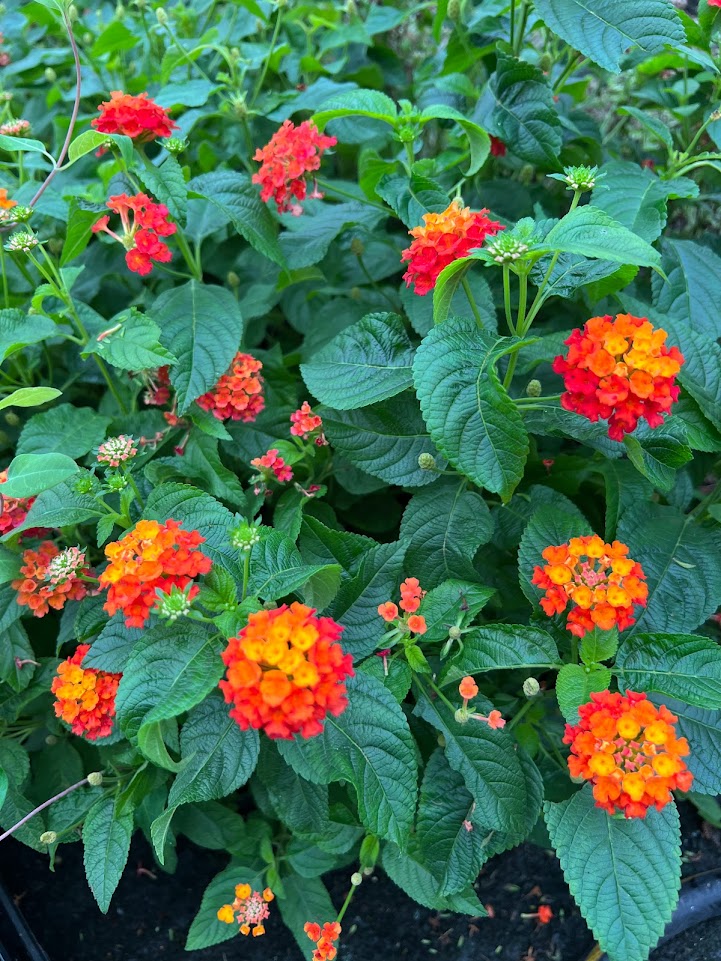My first venture with lantana was about ten years ago when a client had asked if we would grow them for her butterfly landscape. I had seen these plants in catalogs but had yet to dive in and try them myself. A challenge is always fun, and I went full steam ahead with this one. The first plants we grew were lime zinger, confetti, dark purple, and new gold from cuttings.

To anyone who has tried to root lantana it is a patience game compared to simple cuttings like impatiens or begonia. We used a rooting gel to ensure a larger success. Within a few hours we had all four hundred cuttings dipped and in their flats. Then under the mist they go to the aid of an electronic leaf (automated system). After a week of misting, we gave them their first feed while gradually reducing intervals of mist. When, week two came many were starting to show signs of new growth. It was a success and we realized quickly that once rooted these plants are so very easy to care for.
At about week three the plants could now go into a cooler greenhouse to grow on at a lower humidity. In about a month's time these beauties were starting flower. I have never seen such a unique flower type as lantana. A nice round head full of deep tubular flowers with varying color contrasts. It was equally rewarding to brush the foliage and to relish the citrus-like scent. It wasn't long into this custom order that it was decided lantanas would be a mainstay.

Lantanas make great garden plants or can be potted for the balcony or patio. While the blooms are stellar, and the care is easy, the most rewarding part of this plant is its magnetic hold on butterflies. I found out quickly the first year we had these that they must have the sweetest nectar because they were swarmed by the beautiful creatures. Not only butterflies but hummingbirds, bees, wasps, and many other beneficial insects. For that reason, they are a staple in our vegetable garden every year and are a huge help at getting the good guys to take up residence.

Fast forward to spring 2023 and we are offering improved varieties of the ones we started. The gem series is extremely compact, very showy, and so easy to grow. They were easy to root from cuttings, even without hormone, and grew beautifully in the greenhouse this summer. Our greenhouses get upwards of 125 degrees Fahrenheit in the summer and these guys never missed a beat. They had clean foliage, are quick shedding of spent blooms, and the compact habit branches so well ensuring loads of blooms. It was always a cheerful surprise to walk into that greenhouse every day. These varieties did not disappoint with their vibrant colors!!
Happy Gardening,
David Burton


